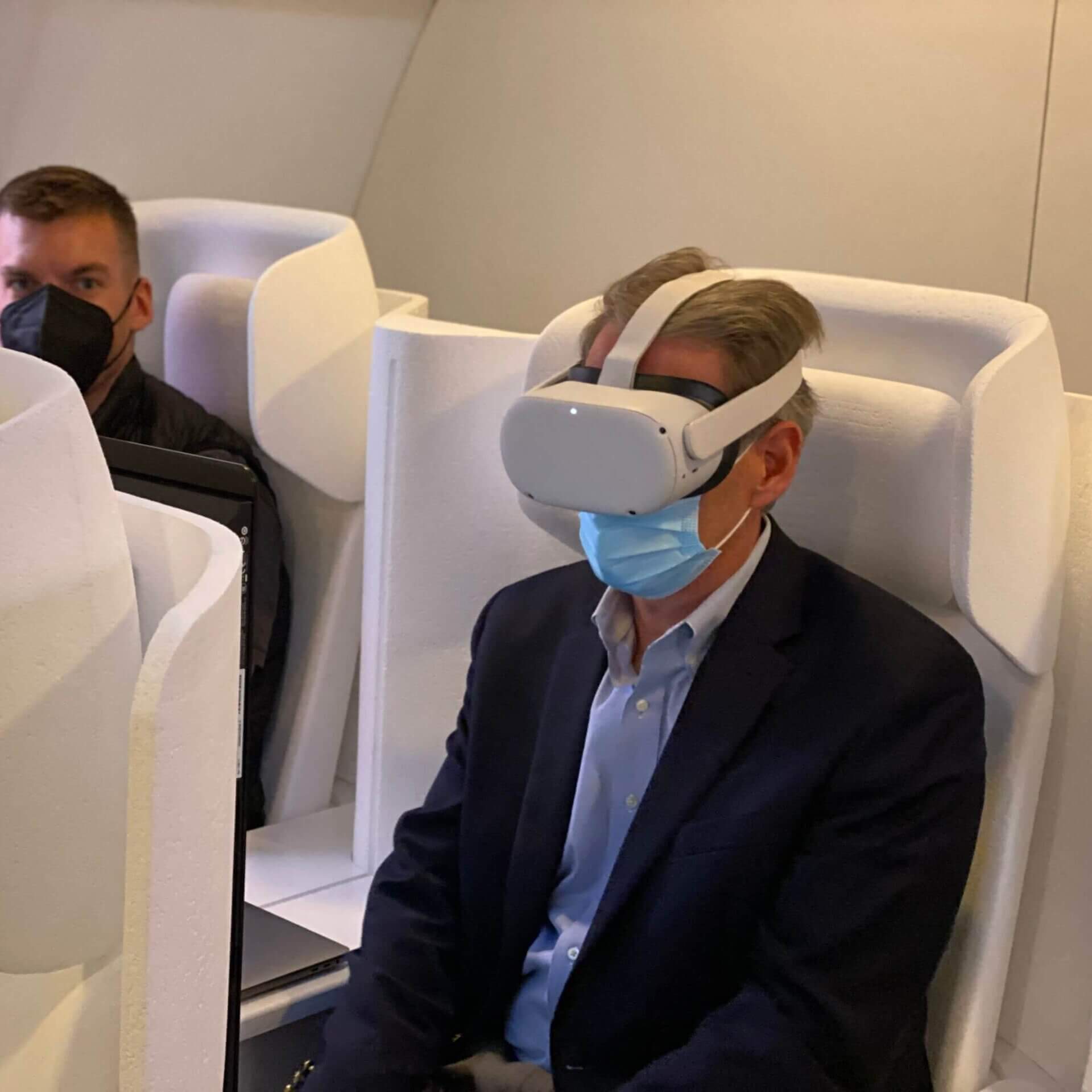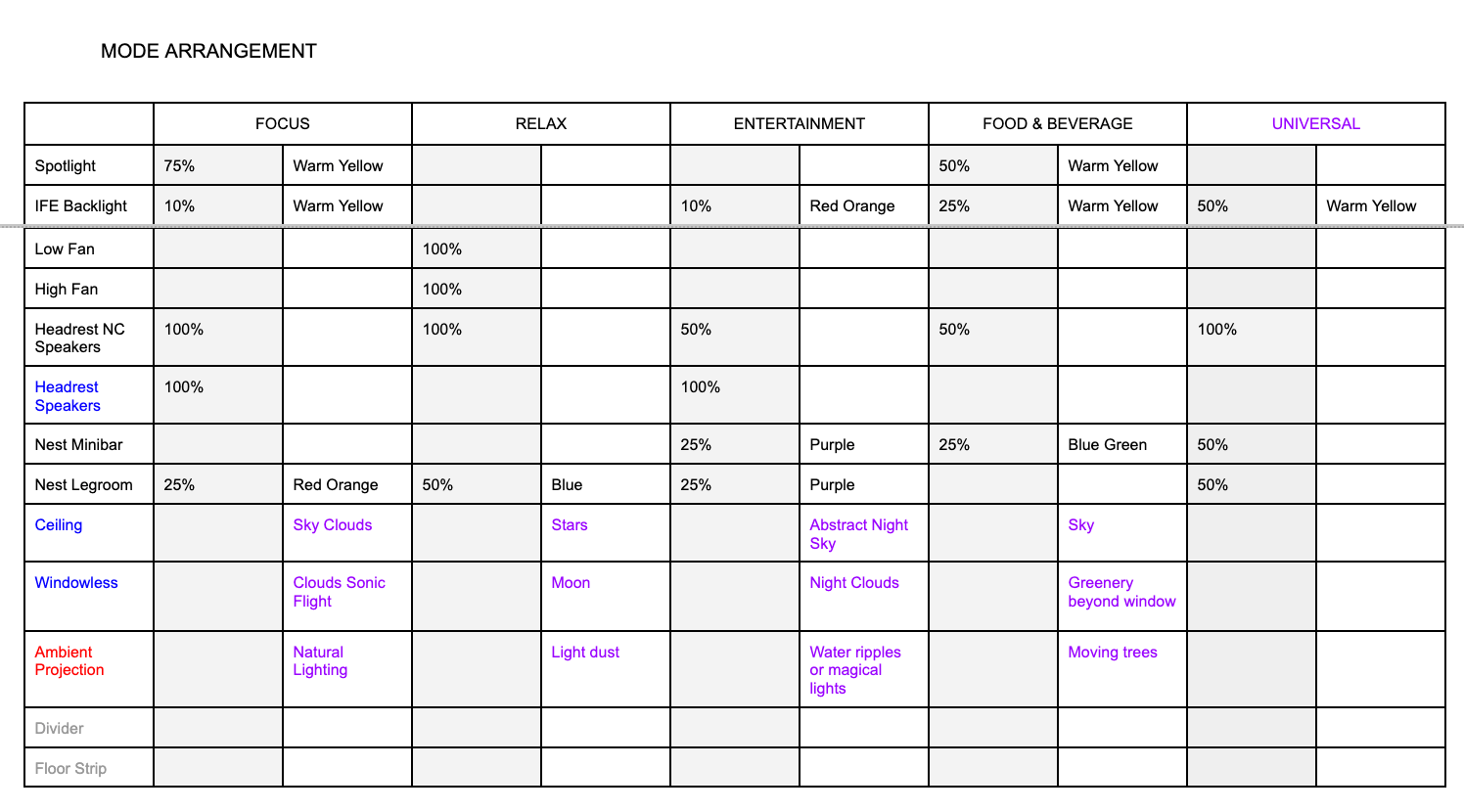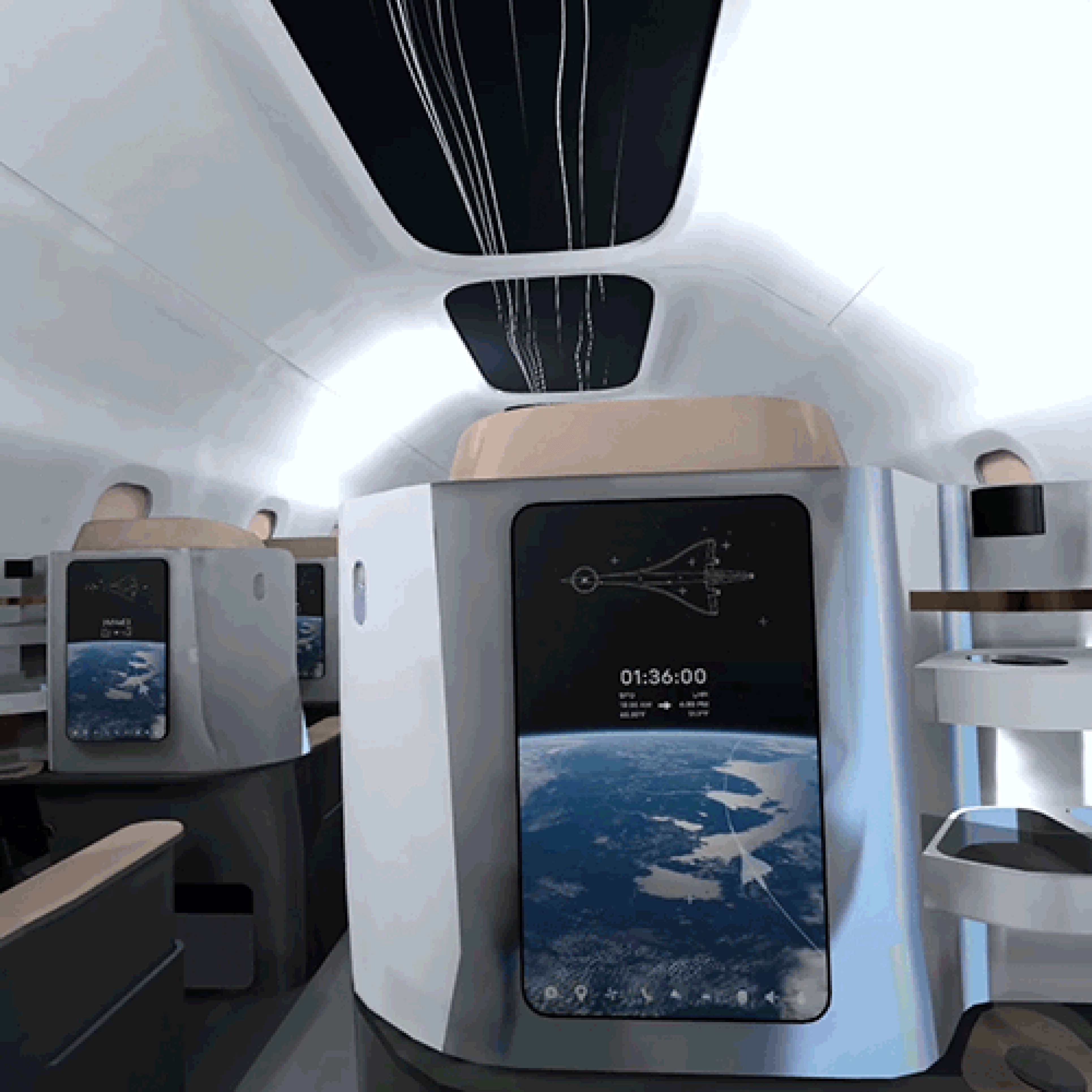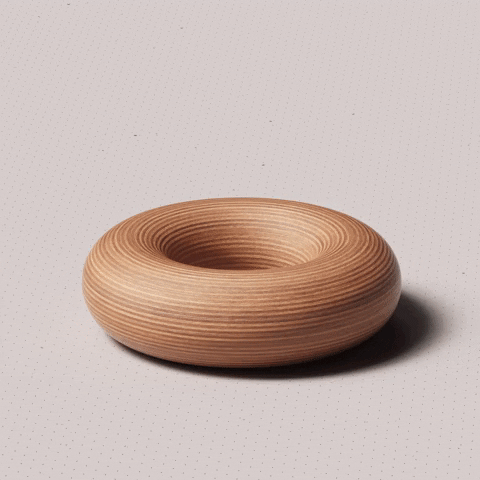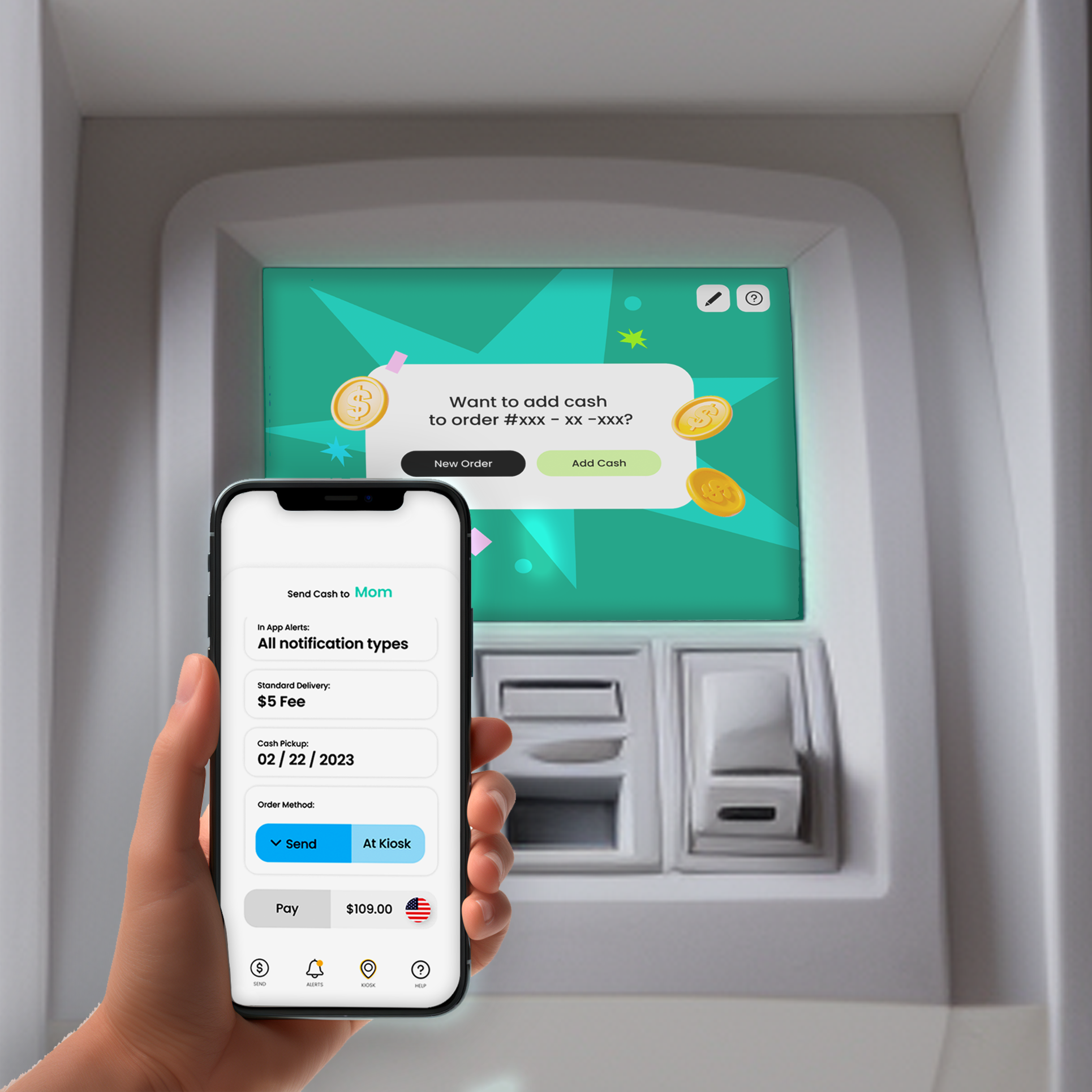SONIC RETREAT
Multi-sensory, in-cabin moments for personalized premium in-flight service designed to revitalize frequent-flyers in the privacy of their seat.
01 ► Refresh your "Senses"

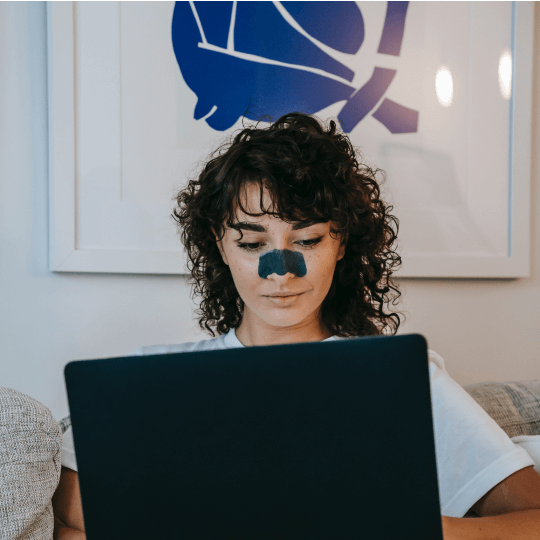


02 ▼ Opportunity
The aviation industry is about to saturate the market with supersonic airplanes — optimized for speed and entertainment. Most airlines value overstimulating in-cabin experiences, missing the mark for exhausted business-class travelers. What if a supersonic airline prioritized passengers’ wellness first?
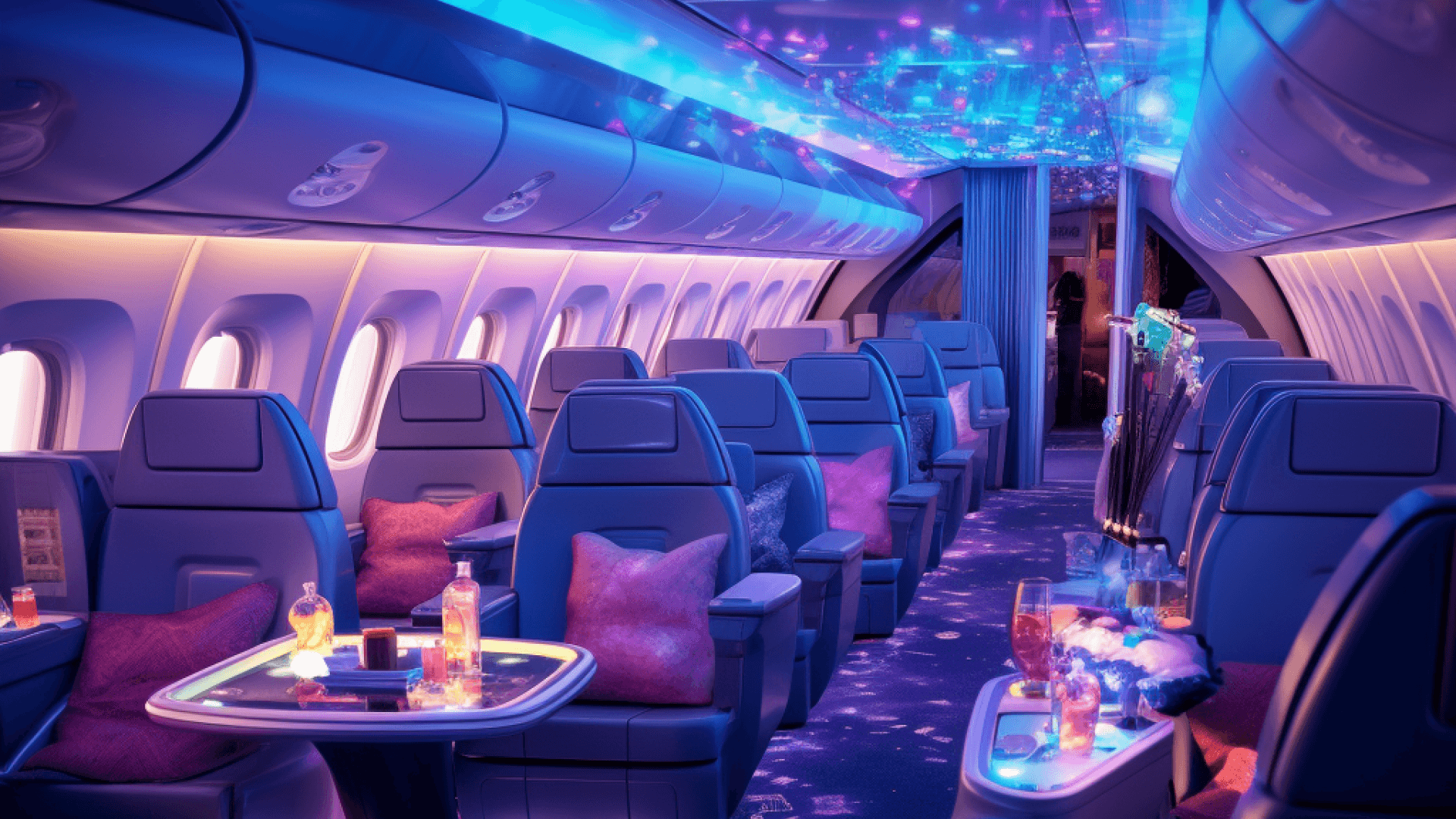
With a relaxing, sensory experience throughout the flight, seamless scenes transition private seating areas into sanctuaries during rest moments and private offices when working. With the new design direction, our client launched a popular media campaign at international airshows, conventions, and online marketplaces. From the positive publicity and fanfare, they raised multiple rounds of funding way beyond their initial targets and counting.
03 ► Features
A spa-like, multi-sensory passenger escape across digital and physical in-seat experiences — the NEW standard in supersonic flying. Frequent flyers feel safe to retreat into a relaxing rest or privately work with gentle nudges when the attendants require their full attention.
0A ● THE NEST
I lead the team to think beyond entertainment elements to embrace the research — the business class personal “nest” becomes a restorative refuge where productivity meets tranquility. Pivoting away from a traditional IFE, the nest automates soothing, sensory scenes of sound, light and temperature elements to subtly transitions from private to shared experiences.
0B ● COMMUNITY SPACE
From the moment a passenger steps onto this climate control vacuum, they feel the intuitive sensation of “I have arrived and can finally relax.”
0C ● BOOM MOMENT
When the flight reaches max speed, passengers are gently guided out of their supersonic power naps for the "sonic boom" and to learn about this once in a lifetime experience.
04 ▼ Research Phase
Through multiple qualitative research trials, a diverse pool of perspectives revealed they’re motivated by brands that value privacy, little touches just for them, and enhanced points of relaxation.

Reassuring the client of the value in reprioritizing from tech savvy and immersive art experiences, I led the team to dig deeper into the constant battle stories of business-class, frequent flying.
05 ► Design Playbook
Getting hands-on with multiple rounds of prototyping sprints to determine the most compelling design for a windowless canvas; transforming the airplane’s passenger seat and surrounding area we termed “the nest" into a premium, multi-sensory sanctuary.

0A ● MOODJAMS
Brainstorms I developed to guide the team, new to the practice of multi-sensory design and extended reality, explore tangible possibilities. Leveraging learnings from prior mental health research and conversations with behavior experts, I experimented with personal control centralized around design principles of PRIVACY — SECURITY — CALM.
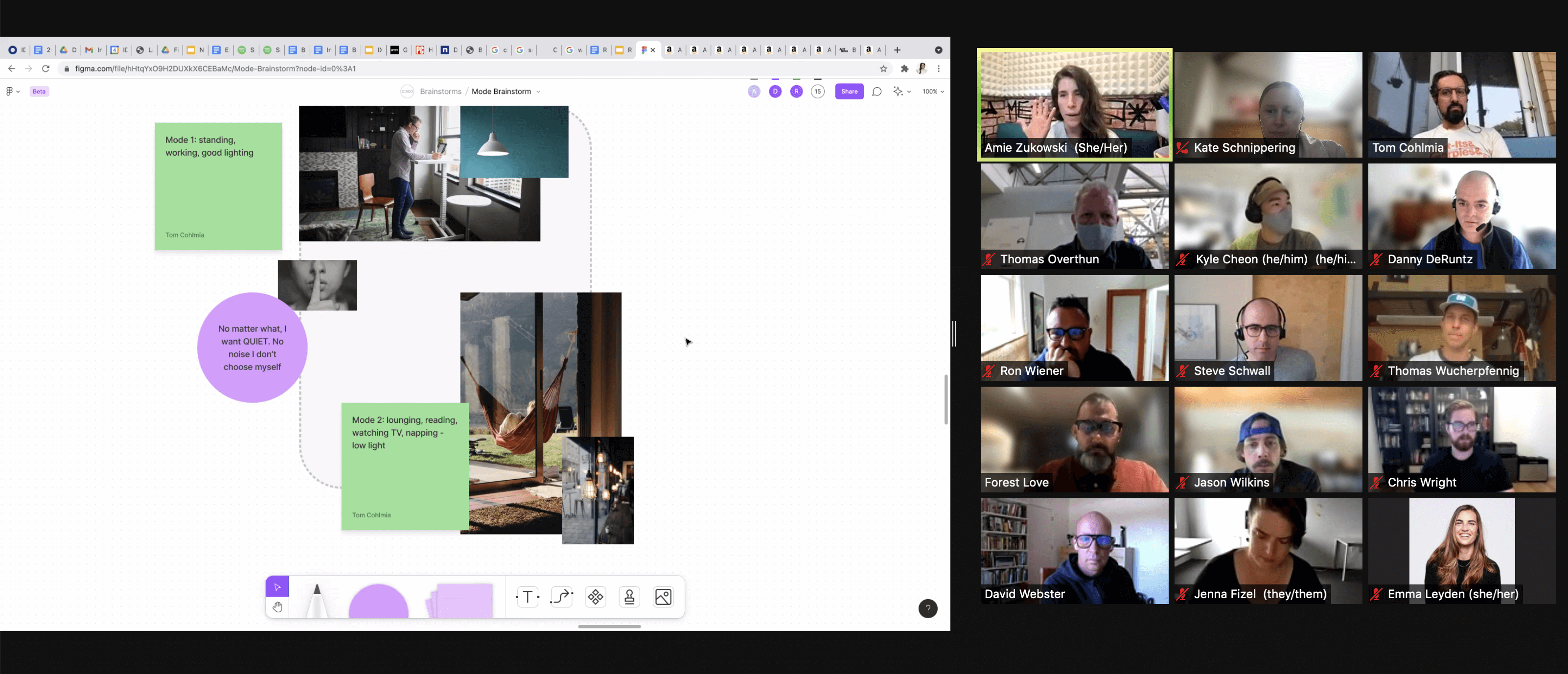

0B-1 ● SENSORY MODES
Exploring orchestrated scenes of distinct multi-sensory elements that mentally project passengers to more soothing states, I balanced climate, sound and noise equally with visuals and touch.
The client originally requested a traditional, dedicated IFE command center; but through user testing, I demonstrated the benefit to passenger satisfaction when automated modes are paired with pre and in-flight app customization.
The system automates in-flight modes with a Firebase cloud app for personalization of “in-nest” bluetooth enabled actuators and an arm-rest trackpad for accessibility.


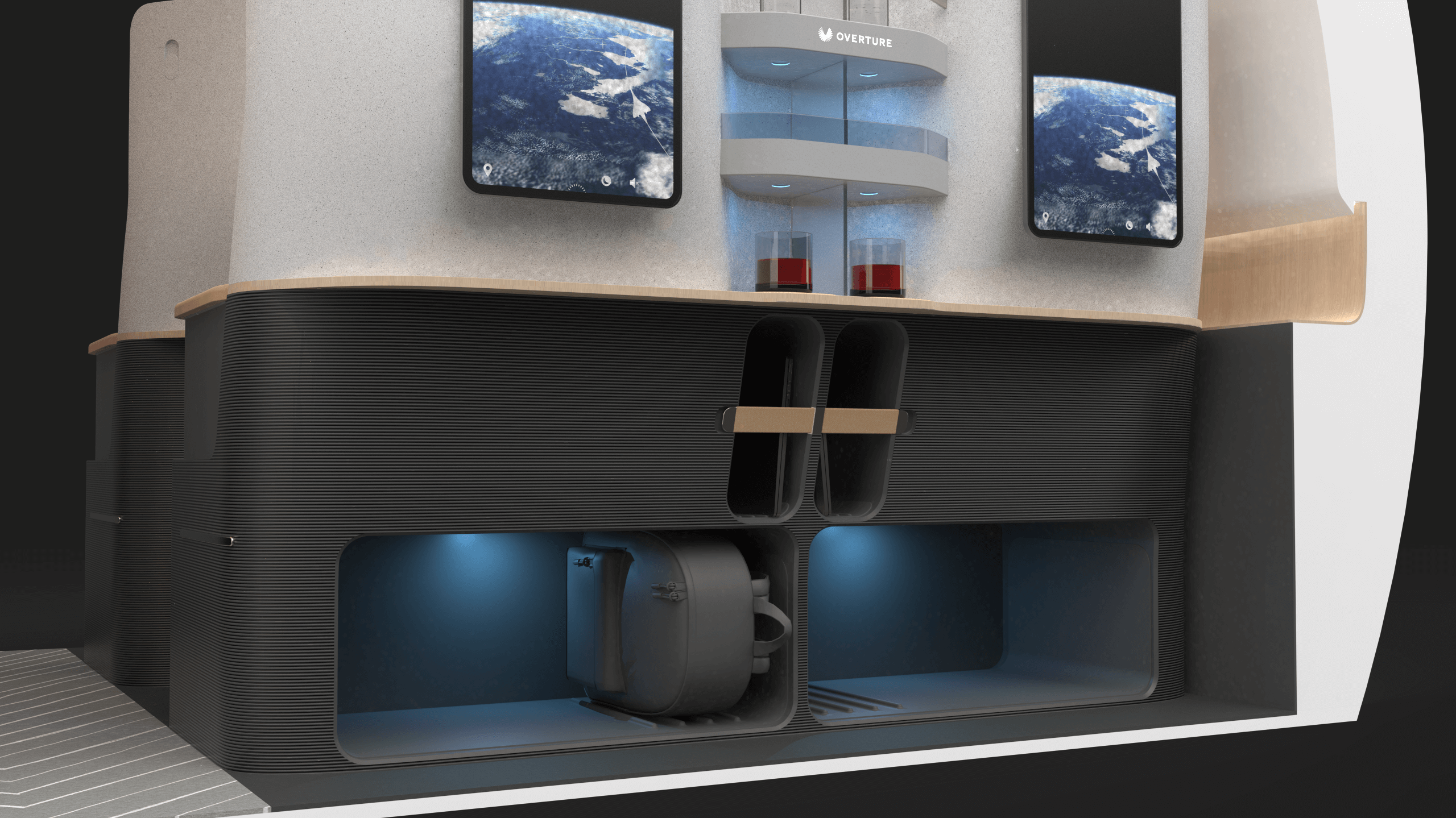
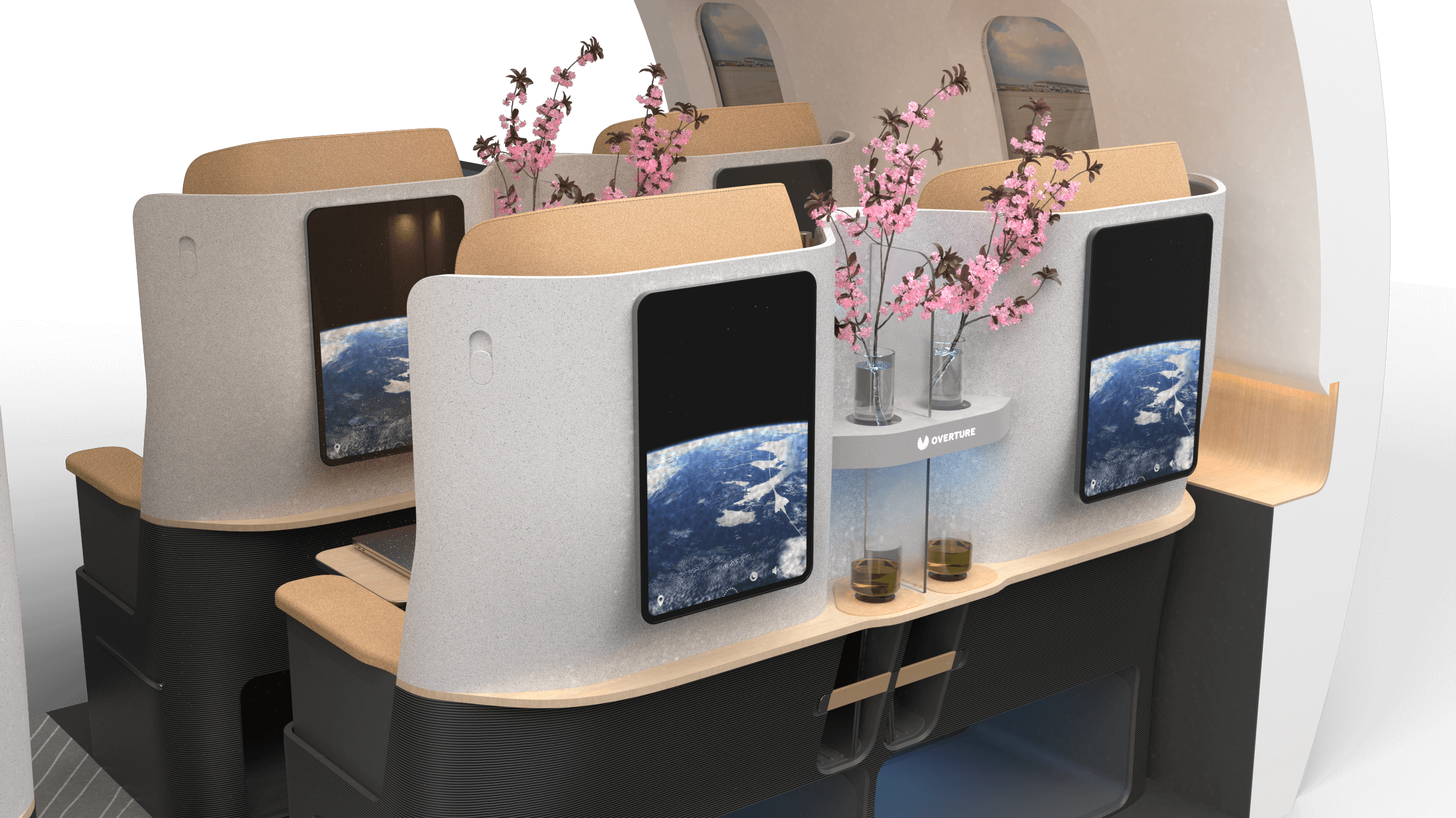
0B-2 ● CHOREOGRAPHED WINDOWS
To transform the windowless “nest,” seamless transitions of choreographed interactions and personalized data visualizations fill in the gaps during the automated, multi-sensory scenes.


Light projections mimic natural movement to provide passengers with delightful discovery moments.
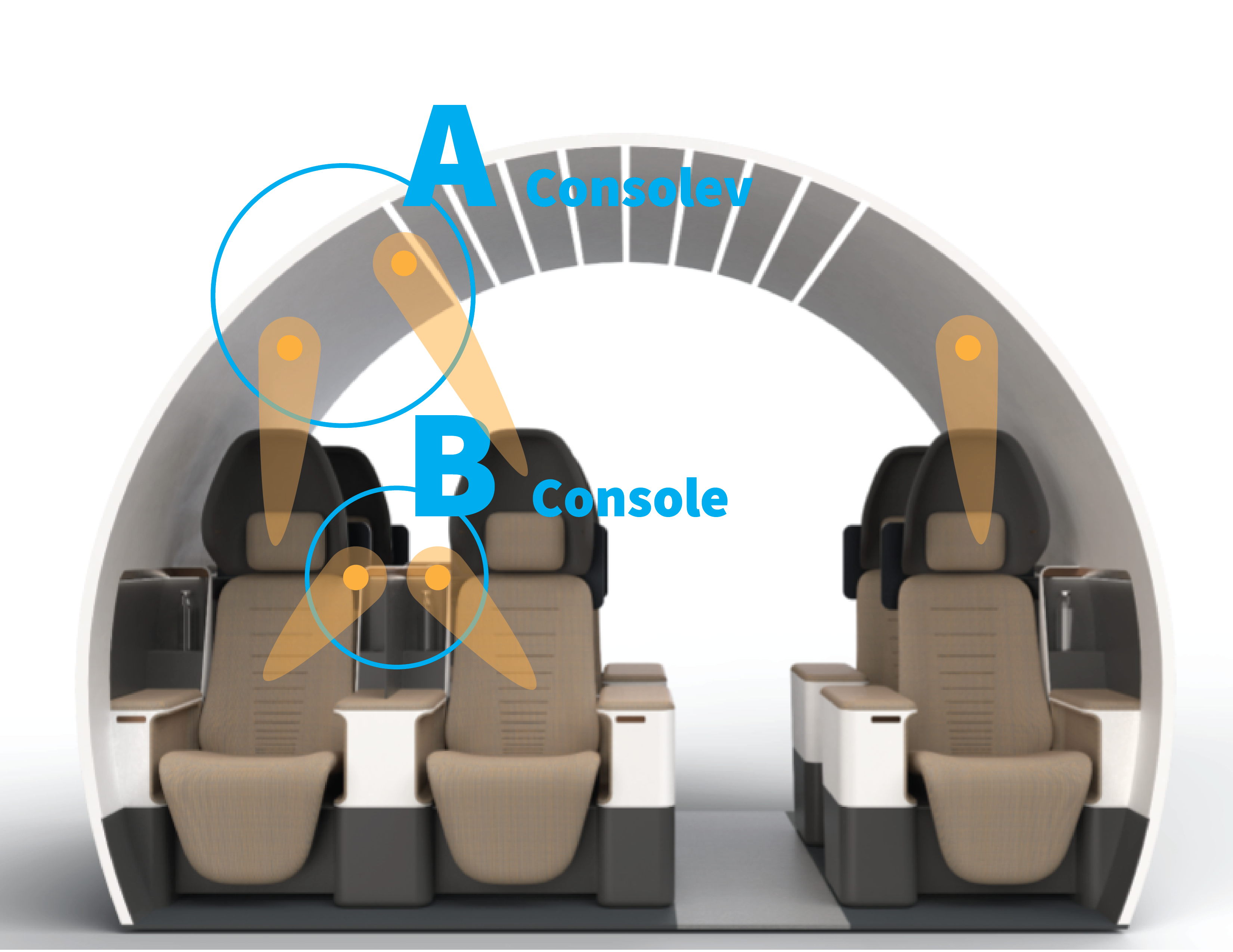
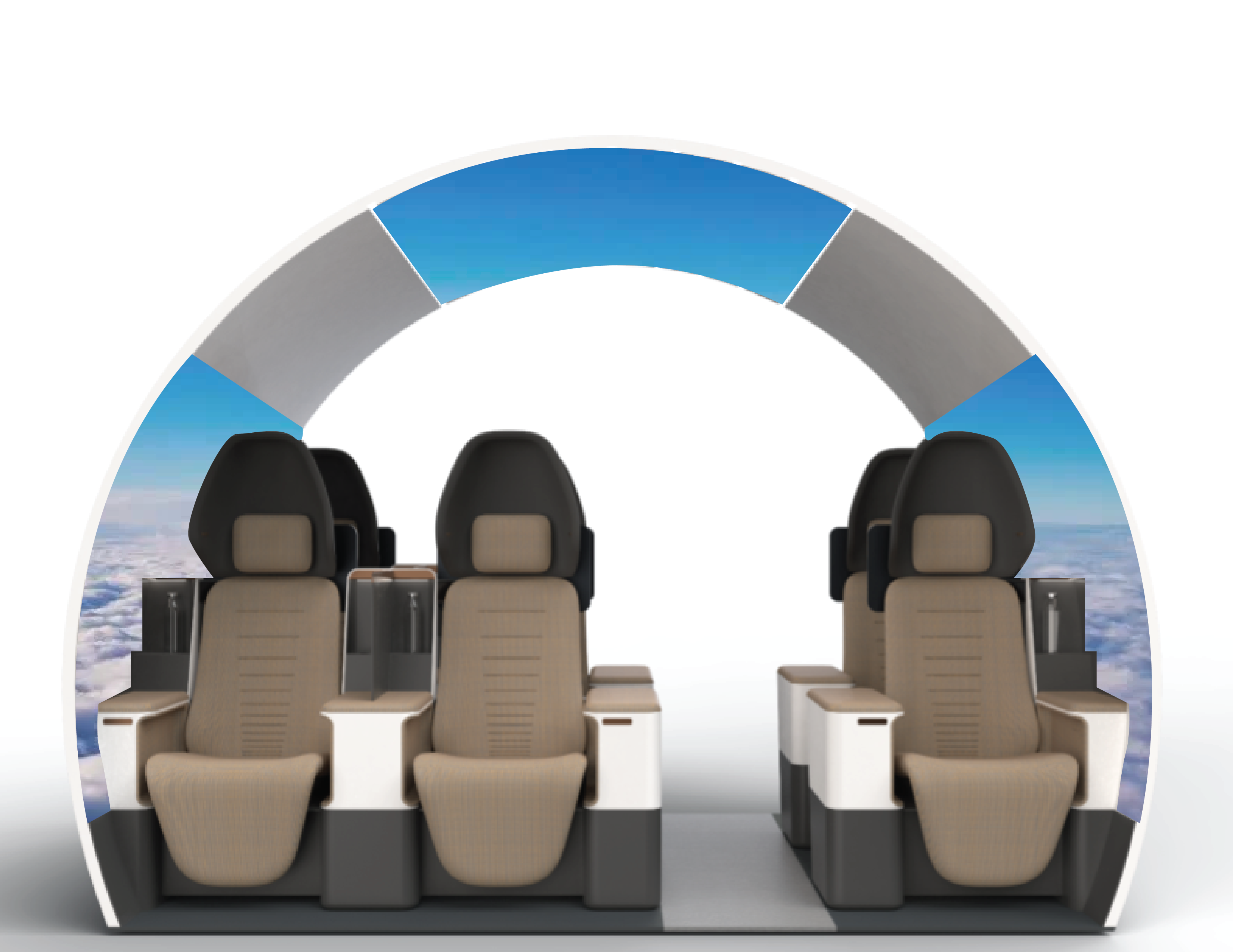
Graphics, temperature control and sound balance out the space, climate, and undesirable noise with the informational transparency flyers crave to feel safe on a technologically advanced flight.
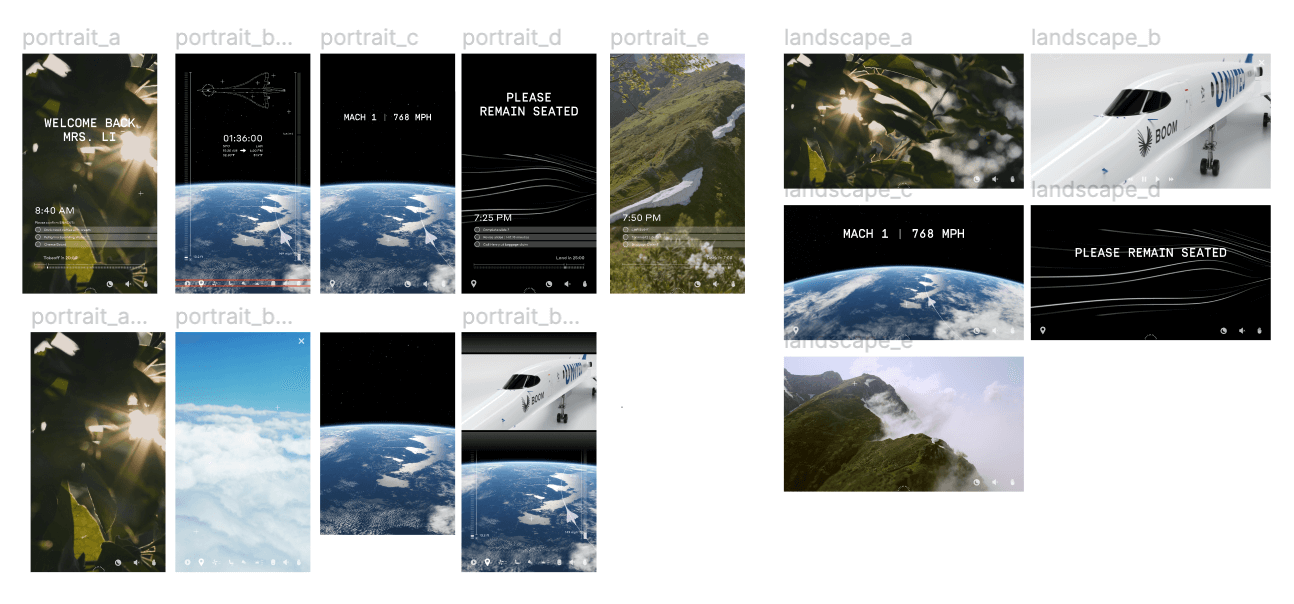

0C ● VR IMMERSION
A VR companion serving as an immersive tool to walk the entire digital plane while in the IRL sectional mockup and experience the comprehensive design.


